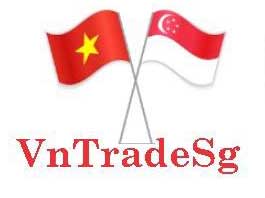ietnam is the fastest-growing digital economy in the region, in large part due to investment inflow which is still on an unprecedented rise. Over the last four years, approximately US$1 billion in funding has poured into Vietnam’s e-commerce sector, reaching a record high in 2019.
At the same time, the last two years has seen the emergence of Vietnamese e-commerce players, such as Tiki, Thegioididong and Sendo, which are among the most successful e-commerce platforms in the region.
According to a report, “Vietnam’s booming e-commerce market”, released by ISEAS Yusof Ishak Institute in January, the greatest potential of Vietnam’s e-commerce sector can be seen via its enormous expansion, which is predicted to reach US$15 billion in terms of revenue in 2020.
In revenue terms, the growth rate (CAGR) of e-commerce in Vietnam surged 30 per cent in 2018 to reach a new high of about US$8 billion. User penetration was recorded at about 56.7 per cent in 2019 and is expected to reach 64.4 per cent in the next four years.
If the e-commerce market can keep its current growth rate of 30 per cent, its market size might hit US$33 billion by 2025, ranking it third in Southeast Asia, after Indonesia (US$100 billion) and Thailand (US$43 billion), said report author Dang Hoang Linh, who is Dean and senior lecturer of the Faculty of International Economics, Diplomatic Academy of Vietnam.
Other supporting factors are also in play. The logistics and delivery business saw a phenomenal growth rate of 70 per cent amid intense competition in 2018. They are also investing heavily in advanced technologies, such as automatic item sorting and big data.
Regarding the supporting legal framework, compared to other Asean countries, Vietnam has a relatively favourable legal environment for the development of e-commerce, with five out of six main laws fully enacted to regulate e-commerce activities.
While many of its fundamentals are in place, Vietnam’s e-commerce market has to grapple with a number of obstacles.
For instance, most Vietnamese enterprises continue to under-perform compared with global online providers as Vietnamese consumers, particularly the younger generation, are fond of purchasing goods from sites such as Amazon and eBay. As such, the entry of Amazon into the Vietnam market has put firm pressure on existing domestic e-commerce players.
In addition, Vietnamese enterprises have not properly invested in researching customer tastes, and the quality and design of domestic products are still inferior to similar products made in other companies.
There is also the fact that domestic and international traders continue to use e-commerce to sell counterfeit goods, infringe intellectual property rights, and even trade banned goods. Online fraud such as stealing information, data and bank accounts have made consumers wary of making online purchases.
Recommendations
The following are some of the recommendations highlighted in the report:
1. To gain consumer trust, domestic e-commerce businesses should promote the provision of products with clear/certified origins and control fake and shoddy goods on the platform.
2. E-commerce players should develop their own infrastructure to adapt to new challenges, ranging from order processing systems, warehouse capacity, to the speed of transportation.
3. Promoting the use of mobile payment could be considered as the way forward for Vietnam, which has a relatively low rate of banking penetration but relatively fast-growing smartphone penetration, especially in rural areas.
4. A special organisation that serves as a state management agency should be established to handle incidents, such as cybersecurity issues. In addition, to narrow the digital gap between regions, policies should aim to provide e-commerce with an efficient network fo transport and delivery services to improve the order fulfilment process.
















